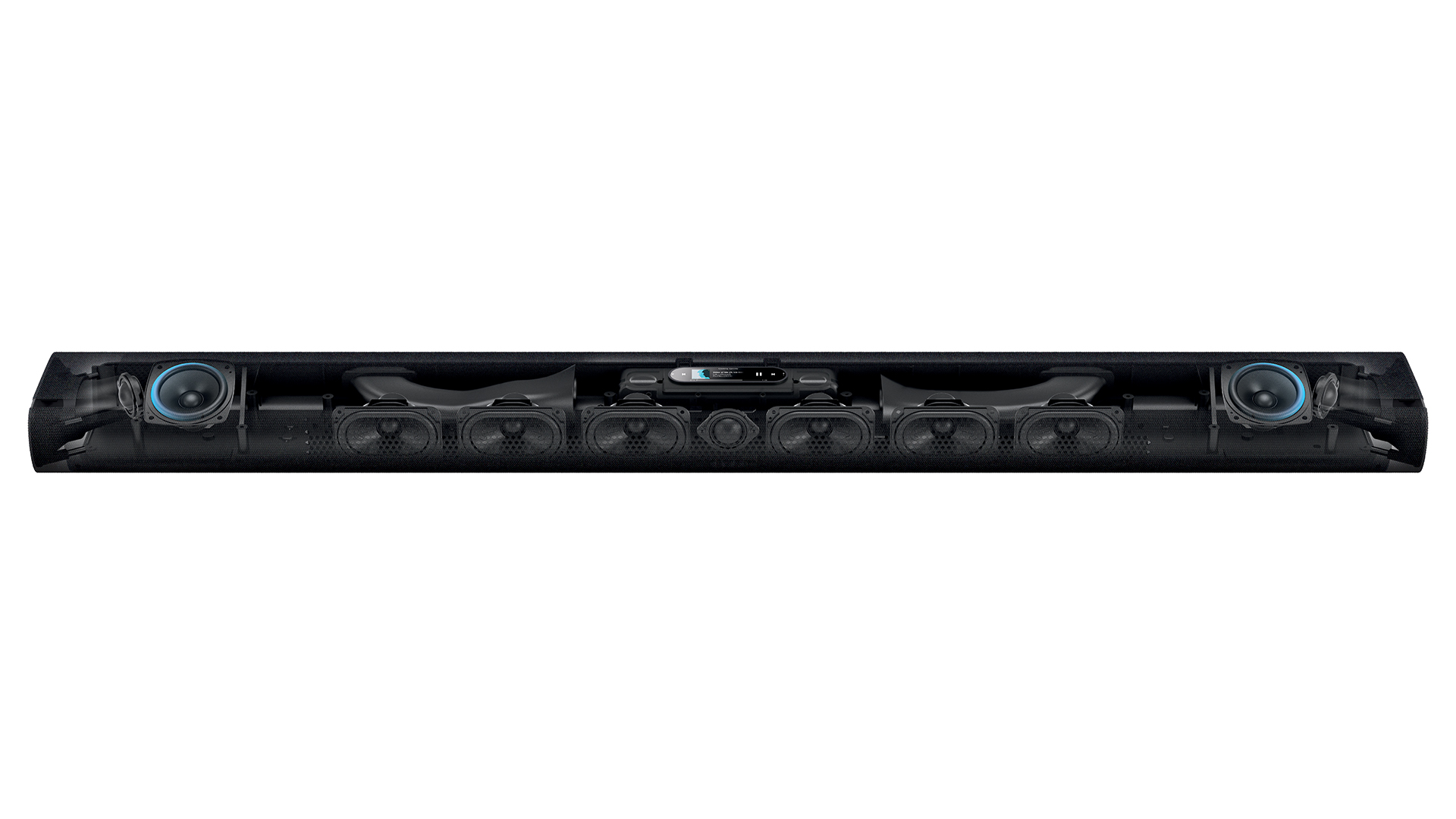Harman Kardon has announced the Citation MultiBeam 1100, a Dolby Atmos soundbar with a name like a weapon Judge Dredd would wield. It features 11 built-in speaker drivers for precise audio positioning, delivering 630W of audio, and its 45.2-inch/1,150mm width makes it ideal for the best 55-inch TVs and bigger.
With a price of £799 (around $990 / AU$1,400) for its May launch in the UK and Europe (it's expected to arrive in Australia later, but isn't currently planned for a US launch), it's taking aim directly at the Sonos Arc, which also uses 11 speakers to create Dolby Atmos audio, but costs a little more.
Except the Harman Kardon bests the Sonos in couple of key specs, which may make it a better buy for lots of people.
First up is HDMI passthrough: the Citation MultiBeam 1100 includes an HDMI input, as well as its HDMI eARC connection to your TV.
This means that you don't lose the use of a precious HDMI port on your TV, which is especially important on mid-range models that might have fewer ports. The soundbar can pass 4K HDR video through to your TV, including Dolby Vision HDR.
It also means that even if your TV doesn't support Dolby Atmos sound (such as the best Samsung TVs from before 2022, as well as lots of mid-range or cheaper models), you can easily get the full effect of Dolby Atmos audio from a streaming box or 4K Blu-ray player that's plugged directly into the soundbar.
The Sonos Arc doesn't include a second HDMI port, which means that for some people, it's just not a great buy, despite sounding fantastic. It's a continued frustration, but not a problem you'd have with the Harman.
Super streaming
Second is streaming audio support: the Citation supports AirPlay 2, just like the Sonos Arc, but also Chromecast, Alexa Multi-room, and Bluetooth 5.0 (though no aptX).
The Arc lacks the last three… though it does support Sonos' own multi-room streaming, of course.

MultiBeam me up
Harman says the sound equates to 5.1.2 channels, and the 11 speakers providing this consist of: six front-firing racetrack (ie, oval) drivers; two upfiring full-range drivers for Atmos height; and three tweeters, with one facing forward as the center channel, and two angled on the left and right for positional width.
Despite promising "deep, rich bass," we'd wager that it'll be a bit light on the low-end compared to a soundbar with a dedicated subwoofer – but you can always add a Citation Sub or Citation Sub S if you want more oomph. The latter is a smaller and more affordable option that will suit those wanting big sound in fairly compact rooms.
The main downsides we can see in the Citation MultiBeam 1100's specs are that there's no DTS audio support (not a problem for most people, but may frustrate home theater enthusiasts) and the HDMI passthrough doesn't support HDMI 2.1 features.
The latter is still relatively rare, though the Sony HT-A7000 is a similar soundbar that includes it… but also costs about 50% more, so we're not too mad at Harman for omitting it.
Of course, the big question here is how it will compare sound-wise to the Sonos, which remains best-in-class for Atmos sound for the price, even years after its launch. We'll have a full review soon enough, and be sure to check out the rest of our picks of the best soundbars in the meantime.
No comments:
Post a Comment